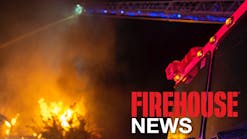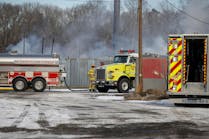National Safety Culture Change Initiative Released
Source Firehouse.com News
When fire officials discuss what needs to happen to reduce the number of firefighter injuries and deaths, one thing is always in the forefront – the need for a cultural change.
That was front and center not only when the Life Safety Initiatives were created 11 years ago, but again when they were discussed last March during the Tampa 2 Summit.
“U.S. society as a whole may contribute to the risk behaviors that are demonstrated within the fire service. Communities expect an urgent and timely response to emergencies and disasters with fully trained individuals arriving on adequately staffed apparatus…” authors of The National Safety Culture Change Initiative wrote in a study released Tuesday.
Among those involved in the collaborative USFA and IAFC project were officials with the NFPA, IAFF, NFFF, NIOSH and CVVFA.
“Despite improvements in personal protective equipment (PPE), apparatus safety devices, more availability of training, greater emphasis on firefighter health and wellness, and decreases in the number of fires and dollar loss due to fires, the rate of on-duty firefighter death and injury has remained relatively unchanged in the past four decades,” they determined.
They said that battling fires “comes at a great cost to human life.”
Unsafe practices and risk taking are nothing new in the fire service. “... In 1973, the National Commission on Fire Prevention and Control published the landmark study “America Burning.” This initial look at the fire problem in the U.S. revealed that 6,200 people, including firefighters, died annually as a result of hostile fire.”
They noted that the public and media perception of firefighters are factors as well.
“(It) is generally not realistic, and it does not represent a true slice of what the work of the fire and emergency service is. Protective clothing may be altered or not used to show an actor’s face or demonstrate a level of aggression or risk that is unreasonable in a real-world setting. This image is further reinforced by slogans such as “No Fear” and “Are You Tough Enough to Be a Hero?” as well as graphics portraying firefighters as dragon slayers and warriors facing overwhelming threats with nothing more than courage and daring. Peer pressure and competition often entice a “more daring” spirit than other individuals, companies, or fire and emergency service organizations. In some cases, actions that demonstrate appropriate caution are viewed as cowardly or impossible,” according to the study.
Former Phoenix Chief Alan Brunacini described it like this: “For 225 years, it was OK for a burning building to kill us. When the fire kills us, our department typically conducts a huge ritualistic funeral ceremony, engraves our name on the honor wall, and makes us an eternal hero. Every Line of Duty Death gets the same terminal ritual regardless if the firefighter was taking an appropriate risk to protect a savable life or was recreationally freelancing in a clearly defensive place … Genuine bravery and terminal stupidity both get the same eulogy. Our young firefighters are motivated and inspired to attack even harder by the ceremonialization of our battleground death.”
The project writers referenced a 2011 analysis of 189 NIOSH firefighter fatality reports in which the authors wrote the four highest causes were insufficient resources, inadequate preparation, insufficient incident command structure and suboptimal personnel readiness.
They identified and discussed a number of specific topics including situational awareness, individual responsibility, leadership, health and wellness, training, vehicle operations, seat belt usage, recruiting, and environmental factors. In addition to pointing out the problems, they also offer potential solutions.
They concluded: “The culture of the American fire and emergency service community is rich and time-honored. The culture has aspects that provide superior protection for life and property, while it also has portions that contribute unnecessarily to firefighter and emergency worker injury and death. The culture can be changed at national, state and local levels without diminishing the quality of services provided by enhancing firefighter competencies needed at emergency scenes. Both the culture and climate can be moved toward a common sense, safety-oriented approach to balance the risks and rewards of questionable behaviors better…”
The theme of this year's International Fire and Emergency Services Safety and Health Week -- June 14-20 -- is 'Creating a Culture of Safety.'






